Family game night has made something of a comeback in the last decade or so. Sure, I’m a little biased when it comes to the success of the board game industry, but the numbers don’t lie. The US board games market is expected to grow by $2.56B by 2025 with an annual growth rate of 8.39%. The confluence of technology pushback and more than a year of close quarters with family members looking for relaxing, analog alternatives to movie night during COVID have cracked open the hibernating games industry even more than it already was.
Knee deep in the hobby end of the board game hobby for the last nine years, I’ve enjoyed the boom of increasingly complex and gorgeously produced games designed to be centerpieces of sprawling collections. But I’m also a parent, and while my game shelves are loaded with sprawling epics like Twilight Imperium Fourth Edition and Lisboa, the family shelves are a testament to the boom of legitimate family board games that anyone can sit down and play with minimal prep time.
What Makes a Good Family Game?
Even in 2022, most non-gamers are familiar only with the tried and true American Classics—Monopoly, The Game of Life, and Uno, among others. Rather than denigrate games played by millions every year, this list will look at what makes these so compelling and provide modern alternatives and additions that will be just as good of a fit on your game shelf.
A good family game does three things:
- It minimizes the decision space to maximize accessibility – Even some of the so-called gateway game classics are loaded with demands for decision-making that can be paralyzing for new gamers. Ideal family games strip the decision tree down to no more than a couple of things at any given time.
- Difficulty scales to player ability – Good family games offset experience and expertise with tools to level the playing field for newcomers and children. Classically, this is done with luck: dice or a draw of the cards. Anyone can roll the double sixes needed to land on and buy Boardwalk. Age and experience have nothing to do with it.
- It’s got to be fun – This is where things get tricky. A game must be fun for everyone playing it, not just the youngest or least experienced at the table. This is often where the classics fall for modern gamers. Thankfully some very good modern family games get all three of these right.
Let’s take a closer look at the 50 best family board games of the last 22 years and which ones you should consider adding to your collection if you’re eager to bring your family into the analog fold.
Cascadia (Randy Flynn, Flatout Games)
Tile placement, clever scoring mechanisms, and animals from the great Pacific Northwest. Cascadia is a relaxed, engaging, easy-to-get-into game that has won its fair share of awards (including the 2022 Spiel des Jahres – the Oscars of board games) and works seamlessly at almost all player counts the game supports. This makes it easy to recommend to families with children ages six and up, and the game itself can scale to the needs of those families. The tile placement mechanic is straightforward; anyone can pick a tile and animal combination and place them in their tableau. But for older players or those more comfortable with more difficult mechanics, the puzzle of the scoring requirements is immensely fulfilling.
7 Wonders (Antoine Bauza, REPOS Productions)
Antoine Bauza’s 7 Wonders was lightning in a bottle when it was released in 2010. It was far from the first card drafting game, but it established many of the mechanics and complexity expectations we have from the genre. As a result, dozens of games have been released in the last twelve years, but none of them have captured the simple, accessible, and yet deeply engaging nature of Bauza’s civilization-building classic (except possibly Bauza’s two-player followup). Whether you’re building up an epic military to take down your neighbors, investing heavily in culture cards to win in points, or going all in on the risky but rewarding technology strategy, 7 Wonders is a perfect game for almost all ages.
Living Forest (Aske Christiansen, Ludonaute)
Many games on this list are good for families because they boil down to minimal mechanics and streamline otherwise complex systems. Living Forest approaches the genre differently, integrating several systems found in more complex games but boiling them down to basics to ensure they are as accessible as possible. If your family has played a few of the games on this list, Living Forest is not the best place to start. But if you are familiar with press your luck elements or multiple victory conditions, Living Forest is a lovely meditation on the impacts of outside factors on nature and the many paths we can take to fix those problems.
The Adventures of Robin Hood (Michael Menzel, Kosmos)
For decades Michael Menzel was best known for his beautiful illustrations and evocative artwork within so many euro game classics like Catan, Bruges, The Speicherstadt, and many others. But his name reached the stratosphere among hobby board gamers when he designed and illustrated the 2012 classic, Legends of Andor, along with its two full sequels. These games upended the adventure genre, adding a euro-style mechanism to manage and track time, and remain among Kosmos’ best-selling games. The Adventures of Robin Hood simplifies those mechanics and layers in a heavy dose of storytelling in the form of a 200-page hardbound book, and it makes for a brilliant, kid-friendly storytelling game like few others.
Stuffed Fables (Jerry Hawthorne, Plaid Hat Games)
Much like The Adventures of Robin Hood, Stuffed Fables is the follow-up of a highly skilled designer, crafting a more family-oriented spin on his earlier work. Jerry Hawthorne broke into the hobby board gaming scene in a big way with the release of Mice and Mystics in 2012, a Redwall-inspired adventure game that captured the fun of dungeon crawling with the wonder and mystique of a fairytale story. Stuffed Fables introduced the storybook-style gameboard and scenario development with a clever dice mechanic that creates an engaging, multi-tiered story that children will want to keep playing through. Plus, there’s an expansion.
Skull King (Brent Beck and Jeffrey Beck, Grandpa Beck’s Games)
Trick-taking games have been a staple of the family game table for decades, but modern fare offers something older classics like Euchre, Spades, and Hearts do not—character. Skull King is a particularly good choice, because of a combination of silly pirate aesthetics and the chaos of a bidding system that you skill can only mitigate so much. It’s easy to make mistakes, easier still to play it perfectly and still fail, and oh so much fun to try and shoot the moon, bidding zeroes over and over again to mess with your opponents. If your children can count and think a move or two ahead, this is a great selection for any family game collection.
Fort (Grand Rodiek, Leder Games)
Fort is a strange game for several reasons. First, it’s a retheme of SPQF by Grant Rodiek, designer of several out-of-print games, many of which focus on asymmetry. Leder Games, the master of asymmetry in games, picked up SPQF, worked with Rodiek to retheme it into a children’s fort building game, and released it as a 20-40 minute card game with fantastic Kyle Ferrin artwork and a unique theme that captures attention as much as anything else. The game has ample depth, sitting at a 2.43 on BoardGameGeek, but the core mechanic is simple—play cards and generate pizza and toys, then use those to level up your fort. Kids love the artwork and theming, and adults can really get into the tightly tuned mechanics. The Cats & Dogs expansion is highly recommended.
Santorini (Gord!, Roxley)
Abstract games were a staple in my family’s house as a child. Stratego, Chess, Checkers, and more were fun, quick, two-player puzzles that I had a blast playing. Santorini levels up on this in many ways, introducing a simple abstract puzzle (get your character to the roof of one of the buildings you and your opponent are building), but layering in ample charm and creativity in the artwork, the brilliant production design, and the inclusion of God Powers that make the game asymmetrical in a way that most abstracts do not. You can teach Santorini in five minutes, it’s relatively inexpensive and beautiful to look at, making it a must-add to your collection.
Azul (Michael Kiesling, Next Move Games)
BoardGameGeek
BGA’s Review
Speaking of abstract games, the most successful of the bunch in the last decade has to be Azul. With four unique versions on the market, including the original Azul, Azul-Stained Glass of Sintra (2018), Azul: Summer Pavilion (2019), and Azul: Queen’s Garden (2021), there are several ways to tackle this simple but addictive formula. Tightly tuned, accessible to learn, but difficult to master, Azul is the perfect 45-60 minute abstract strategy game that works well for the whole family. Beware that it does involve direct player interaction in the tile draft, which can create some salty feelings, more so than a game like Santorini, where’s a direct tit for tat, but it’s well worth having at least one copy of this game on your shelf.
Patchwork (Uwe Rosenberg, Lookout Games)
BoardGameGeek
BGA’s Review
I introduced my daughter to Uwe Rosenberg’s Patchwork when she was four years old, and she took to it immediately. It’s still the most common game that she or her brother will bring down when they ask to play something, often the Christmas-themed version (regardless of the time of year), and there’s good reason for it. The pattern-building nature of the game is instantly accessible. Take a tile, pay for it, and put it in your quilt. It’s so simple, and because it is a two-player game with personal player boards and a race-style approach, there are fewer hurt feelings than in a game like Azul or even Santorini, where the actions of one can directly impact another. Patchwork is a must-play if you are looking for another two-player game for your family games collection.
PARKS (Henry Audobon, Keymaster Games)
BoardGameGeek
BGA’s Review
A good family game is accessible to everyone at the table, from the youngest players to your partner and parents. There are plenty of games that fit the bill mechanically, but it’s theme that can be the stumbling block. PARKS from Keymaster Games and designer, Henry Audubon, is a perfect example of marrying the two. Using artwork from the magnificent Fifty-Nine Parks series, PARKS is a beautiful game to look at. It will make you want to visit the locations depicted on the cards. Mechanically, it is smooth as butter, asking players to take photos and explore these parks as leisurely as possible. Think Tokaido, but in America. If your family travels a lot or is considering it, you owe it to yourself to play PARKS.
Ticket to Ride (Alan Moon, Days of Wonder)
BoardGameGeek
BGA’s Review
There’s a good chance if you’re reading this list that you already own a copy of Ticket to Ride. With millions of copies in print, dozens of versions to choose from, and accessibility in most big box stores, Ticket to Ride has become the de facto upgrade from Monopoly for many families. The mechanics are as simple as they get—draw cards or spend cards to complete routes—but the complexity spins from there, building on player decisions to block opponents, completed increasingly complex routes, and explore one of more than 20 available maps. If you haven’t played Ticket to Ride yet, go do it. If you have and don’t own a copy, consider which map and mechanics are most interesting. You can’t go wrong with the classic American map in the base box, but Europe is great, and there are several smaller, quicker versions based on specific cities now available (New York, Amsterdam, London, and San Francisco).
Splendor (Marc Andre, Space Cowboys)
BoardGameGeek
BGA’s Review
Splendor was an instant classic the moment it was released in 2014. Mechanically, it reminds me most of Ticket to Ride. On your turn, you have two options—collect resources or spend those resources to accumulate points. The difference is that rather than building routes on a map, you are accumulating gems that provide permanent resources that can be used to purchase increasingly valuable gems and eventually impress the lords and ladies in the tableau. At its core, Splendor is a simple math puzzle, but the colorful tiles, poker chip bits, and three-minute teach make it perfect for families of all types.
Sushi Go Party! (Phil Walker-Harding, Gamewright)
BoardGameGeek
BGA’s Review
Sushi Go! was a cute, simple 20-minute drafting game released in 2013. It did well, and I’d probably include it on this list if Sushi Go Party! hadn’t been released three years later. Designed by family-game master Phil Walker-Harding, Sushi Go Party! is an easy-to-play drafting game of collecting and creating colorful cartoon sushi and sashimi dishes. With more than twenty options in the tin to choose from each game, every play is unique, and with the ability to support up to eight players, it’s a lot more flexible than the other games on this list. Every family game collection should have a drafting game, and Sushi Go Party! is the best of the bunch.
Kingdomino (Bruno Cathala, Blue Orange Games)
BoardGameGeek
BGA’s Review
When Blue Orange announced Kingdomino in 2016, I was skeptical. The name has grown on me (age and fatherhood make me much more amenable to bad puns), but the game didn’t have to. It was an instant hit for me, my game group, and my family. Each turn, players will draft domino tiles, add them to their tableau around their castle and try to build the largest plots of different land types—fields, oceans, forests, deserts, and mines. You score points based on plot size and the number of crowns in that plot, so it’s a rush for the best tiles, but if you choose something really good, you’ll almost certainly go last in the next round. There are multiple versions of Kingdomino and a very good expansion in Age of Giants, but the base game alone remains an all-time favorite in my house.
Marvel United (Andrea Chiarvesio and Eric Lang, CMON)
BoardGameGeek
BGA’s Review
I’ll be honest; I backed Marvel United because it was cute. There were dozens of plastic miniatures, all of my favorite characters from the MCU and Marvel comics, and a boatload of content. I then proceeded not to play it for the better part of two years. But now that I have, it’s become one of my favorite quick, cooperative family games, and my son in particular loves Marvel and the MCU, so it’s a perfect game for him. You can get a copy of Marvel United on Amazon for less than $20, and while the bonus Kickstarter content is nearly impossible to find at a reasonable price, the base game and available expansions alone are more than enough for most families.
Gizmos (Phil Walker-Harding, CMON)
BoardGameGeek
BGA’s Review
It’s about time for another Phil Walker-Harding game on the list, this time with Gizmos. Released shortly after Potion Explosion, Gizmos was compared to the former because of the use of marbles. The games don’t have much else in common, though. Gizmos is about building smarter motions, a literal engine-building game that introduces several common board game mechanics in a tactile way that resonates well with families of all pages. A 2019 Mensa Select winner, Gizmos is one of those games you have to play to fully understand why it’s such a great addition to your collection.
Downforce (Rob Daviau, Justin D. Jacobson and Wolfgang Kramer, Restoration Games)
BoardGameGeek
BGA’s Review
Downforce is a game about betting on car races. Which, on the surface, doesn’t seem like the best fit for a family experience, but you’d be wrong! Downforce is an interesting artifact because it is the fourth iteration of a formula Wolfgang Kramer developed in 1974 with Tempo and redeveloped into a car racing game Niki Laudel’s Formel 1 in 1980. Restoration Games got their hands on the formula in 2017, and the result is a quick-paced, fun auction and betting game about race cars in which players will influence different cars on the track (beyond their own) based on the cards played. My copy has been retrofitted as Mario Kart, using the pieces from the Mario Kart Monopoly release a few years ago; the kids love it.
Tokaido (Antoine Bauza, Funforge)
BoardGameGeek
BGA’s Review
I mentioned Tokaido earlier when discussing PARKS and for good reason. Antoine Bauza’s 2012 love letter to Japan is as leisurely and relaxed a gaming experience as you’ll find and a perfect example of how to imbue a family game with colorful, evocative elements that will capture the attention of all ages of players. Eschewing the violence and flash of many games, Tokaido tasks players with going on the best vacation, traveling feudal Japan and seeing the most attractions, and eating the best food. You’ll collect sets of artwork cards, pick up meals when you rest, and race through some elements, but it’s mostly about having fun with the beautiful Xavier Gueniffey Durin artwork.
Tiny Towns (Peter McPherson, AEG)
BoardGameGeek
BGA’s Review
Tiny Towns is at the vanguard of new board games that utilize “roll and write” style mechanics in a board game format. All players will be given a single resource or piece of information and must find the most efficient way to use it. Instead of writing on a sheet of paper, in Peter McPherson’s Tiny Towns, players will place cubes on their player sheet, trying to match blueprint patterns for one of several possible buildings you can have in your town. When all the cubes are in place, you’ll remove all of the cubes and place a wooden building in one of the squares, continuing this process until you can’t place anything. The player whose combination of buildings scores the most points wins. Expansions add fun new twists to the formula. With a quick teach time, sub-30-minute play time, and colorful animal characters, it’s an instant hit for children and adult gamers alike.
Zombie Teenz Evolution (Annick Lobet, Le Scorpion Masque)
BoardGameGeek
BGA’s Review
Zombie Kidz Evolution was a clever, light-hearted game from Annick Lobet that immediately shot up the family game charts when it was released in 2018. Based on the relatively simple mechanics of Zombie Kidz, asking players to keep their characters alive during a zombie invasion, Evolution adds legacy elements that will have your children pining for just one more play to unlock the stickers, extra characters, and rules that come along the way. This is legitimately one of the best legacy game implementations out there, and it integrates seamlessly with the sequel Zombie Teenz Evolution.
Junk Art (Jay Cormier and Sen-Foong Lim, Plan B Games)
BoardGameGeek
BGA’s Review
I can’t remember the last time I played Junk Art properly. The game is effectively a big box of funny-shaped pieces that you can use to play any of a dozen variations from the rule book. But the best part of the game is finding fun and unique ways to stack all those bits and see when they fall. The cards, mixed rules, and variations on the basic format make it a highly replayable experience, but it’s also flexible enough to accommodate your youngest children. Dexterity games are always a blast, and Junk Art is a big box of fun.
King of Tokyo (Richard Garfield, Iello)
BoardGameGeek
BGA’s Review
King of Tokyo has been expanded, reimplemented, and adapted several times since its original release in 2011, but the core box remains one of the most accessible and fun experiences you can have with your family. Role dice, Yahtzee-style, and use them to attack other monsters, heal your own monster, or score points. Power-ups allow you to break rules and get more powerful, or you can try to hit everyone as hard as possible and as often as possible. Richard Garfield has a knack for making simple ideas into epic experiences, and King of Tokyo is no different.
Canvas (Jeff Chin, Andrew Nerger)
BoardGameGeek
BGA’s Review
Canvas is a tricky game to review as a pure game. There are mechanics, but mostly players are trying to make the prettiest or most interesting (or, in the case of my children, weirdest) artwork they can with the translucent cards provided. Certain combinations of icons and colors will reward additional points, but if you want to play a few rounds just to see what everyone comes up with and vote on the best, you can do that too. It’s colorful, light, and as wholesome as a game can get. Canvas is a blast for any art lovers in the family.
Forbidden Desert (Matt Leacock, Gamewright)
BoardGameGeek
BGA’s Review
Cooperative games existed before Matt Leacock, but no one had mastered the careful balance between fun and challenge Leacock pulled off with Pandemic in 2008. As great as that game was and as much of an impact as it’s had on the hobby, the theme, and underlying mechanics were a bit much for families. Forbidden Island arrived two years later, using a similar style of expanding threat to much fanfare, but it was Forbidden Desert that nailed the cooperative family game formula. Of the three Leacock Gamewright games, this is still the best, aesthetically, mechanically, and in general replayability.
Karuba (Rudiger Dorn, Haba)
BoardGameGeek
BGA’s Review
Similar to Tiny Towns, Karuba asks players to take the same information available to all players every round and use it in the most efficient way possible. Every player could make the same decisions and end in a tie, but it doesn’t happen because the game is designed to represent player decision-making spaces in a clear, concise, accessible way. It’s also a lot of fun, as you set out to find lost treasures in the jungle. Karuba has a card game equivalent, which is a fine game, but if you want to add something to your family game shelf, Karuba, the original board game from Haba, is the way to go.
Potion Explosion (Stefano Castelli, Andrea Crespi and Lorenzo Silva, Horrible Guild)
BoardGameGeek
BGA’s Review
Potion Explosion was an instant hit with my children. They immediately took to the simple mechanics and big table presence. I played for the first time when my daughter was only three years old, and it still worked, minus a few more complex rules (like using the potions after completion). Now that we can play it with the full rules, it’s become a favorite in the house, a quick, fun, but strategic enough experience that both children enjoy and that scales to everyone in the house with ease.
Las Vegas (Rudiger Dorn, alea)
BoardGameGeek
BGA’s Review
Las Vegas is a fun family game because the theme isn’t exactly child-friendly. I’m not taking my kids to Vegas to gamble away our savings any time soon, but the game introduces several key ideas in that line. Almost entirely luck based, players will roll big handfuls of dice and allocate them to different casinos where they can win potential money cards. Or they can bust and get nothing. It’s gambling, the game. Las Vegas is quick, remains in print almost continuously, though, frequently with different versions and form factors, and children love throwing a big handful of dice across the table.
Alhambra (Dirk Henn, Queen Games)
BoardGameGeek
BGA’s Review
Dirk Henn’s Alhambra isn’t much to look at at first glance. The graphic design is bland, and the tiles don’t do anything particularly exciting out of the box, but the concept of collecting resources to purchase tiles for a tableau works as well here as it does in other forms like Ticket to Ride and Splendor. There’s the plus side of it being a Queen game, meaning dozens of small expansions add one or two small rule tweaks to the experience, making it an instantly expandable and highly replayable experience.
Draftosaurus (Antoine Bauza, Corentin Lebrat, Ludovic Maublanc, Theo Riviere, Ankama)
BoardGameGeek
BGA’s Review
There are several drafting games on this list because they do something that few other games can do. They eliminate most of the downtime spent waiting for a turn. If there’s anything a child hates in games, it’s waiting for their turn, so games with simultaneous actions and the passing of resources are a great way to address that concern. Draftosaurus has players passing around big handfuls of dinosaur meeples and populating their player board for points. That’s it. It takes 15-20 minutes, the rules are super simple, and the theme is an instant win for children. Plus, multiple expansions are now available to try out new maps and dinosaur types.
Kingdom Builder (Donal X Vaccarino, Queen Games)
BoardGameGeek
BGA’s Review
At first glance, Kingdom Builder looks like another medieval area control game that will put most families to sleep, but Donald X. Vaccarino has created something different. With a set of constantly changing placement rules and shifting scoring goals, players remain engaged throughout the experience, and the game is short, only taking 45 minutes to play through. This is a bit on the heavier end, so is recommended for slightly older children, but the quick play time and engaging mechanics make it a great euro for family shelves.
Rhino Hero (Scott Frisco and Steven Strumpf, HABA)
BoardGameGeek
BGA’s Review
Who doesn’t want to stack cards five feet high and watch them all fall? Rhino Hero, from 2011, is a blast for children and adults alike, and while it can be physically inaccessible if you stack high enough, the basic concepts are simple—stack cards, move heroes. The slightly better Rhino Hero: Super Battle is also recommended, though it does cost a bit more and tends to get higher on the table much faster because of the taller cards. Either game makes a good addition to your dexterity collection, however.
Zooloretto (Michael Schact, Z-Man Games)
BoardGameGeek
BGA’s Review
Michael Schacht’s 2007 reimplementation of Coloretto tasks players with building out their zoos with pandas, zebras, chimps, lions, and more. There are several expansions and several unique ways to play the game, and despite all the stuff in the box, the game works well with small children (my daughter was a pro at Zooloretto at five). Additional versions include the two-player Zooloretto Duell, Zooloretto the Dice Game, and the game can be combined with Aquaretto and Zooloretto Mini, as well as the dozens of promos and small expansions that have been released in recent years.
NMBR9 (Peter Wichmann, ABACUSSPIELE)
BoardGameGeek
BGA’s Review
Number 9 is another simultaneous play game, similar to Karuba. In this case, players will be tasked with taking numbers from 0-9 and stacking them on top of each other, trying to get the higher numbers as high on the stack as possible. There are several rules for how the tiles can be stacked, and the polygonal shape of the numbers makes it anything but easy to overlap them just right. With 20 short rounds, the game takes about 15-20 minutes to play and is perfect for players of all ages. Peter Wichmann’s classic continues to be a favorite in my house.
Qwirkle (Susan McKinley Ross
BoardGameGeek
BGA’s Review
Released in 2006, Qwirkle was an instant classic, asking players to use their cross-brain abilities to track shapes and colors in a growing, shared tableau of 108 wooden blocks. An abstract strategy game, Qwirkle can be a bit frustrating at first, and there are other games that have used the same mechanic in more interesting ways, but with the low rules overhead and quick play time, Qwirkle remains an all-time classic and is a must play for fans of abstract games.
ICECOOL (Brian Gomez, Brain Games)
BoardGameGeek
BGA’s Review
Penguins, weebling and wobbling their way through an Icy High School. What more can you ask for? Seriously, what more? I’ll wait. ICECOOL is a dexterity game, but part of what makes it so compelling is that it works on multiple levels. The game space? It’s the box itself, constructed by taking the pieces apart and lining them up next to each other on the table. The game pieces? These are your wobbly penguins, designed to spin in wild and unpredictable ways, until you figure out how to use them, that is. A skilled player can do incredible things in this game, and while I’m not skilled, my children are getting there. This is one of those games that is both fun to watch and to play.
Hey, That’s My Fish! (Alvydas Jakeliunas, Gunter Cornett, Fantasy Flight Games)
BoardGameGeek
BGA’s Review
More penguins! Hey, That’s My Fish! Was introduced to me in a small gaming tournament, so I played it competitively first, and let me tell you—this is a cutthroat experience. Players will skate their penguin pieces around the hex-grid you build, attempting to pick up the most fish, but because each tile disappears once you move off of it, you can also block your opponents, or even cause them to fall off the side of the map. While the meanness of that latter part can be a bit much for some families, in the right hands, it’s a fun, silly, and very quick experience. Not sure if it’s right for you? Check out the $3 iOS app.
Rise of Augustus (Paolo Mori, Hurrican)
BoardGameGeek
BGA’s Review
Rise of Augustus was nominated for the Spiel des Jahres in 2013, and yet it has somehow faded away, becoming less popular and at one point out of print. Paolo Mori is known for his quick, accessible designs, and this one is no different, seamlessly integrating a bingo-style mechanic into a game that is otherwise colorful and accessible to all ages. It’s not for everyone, but if the thought of gamer-bingo is appealing, Rise of Augustus is worth tracking down.
Tsuro (Tom McMurchie, Calliope Games)
BoardGameGeek
BGA’s Review
Tsuro is a beautiful game. Not $300 beautiful, but very pretty and one of the first abstract games that showed me what modern hobby board game budgets can do for classic, simple formulas, Place a tile, move your stone, and try to be the last stone standing. There are games with more themes that do something similar (see: Metro), but Tsuro’s elegance, relative simplicity, and accessibility for all ages make it a must-play for families. Calliope in general, has a lot of very good family games that are well worth your time, but this remains my favorite and the likely best of the bunch.
The Game (Steffen Benndorf)
BoardGameGeek
BGA’s Review
“The Game” is one of the worst-named games currently available. It is also one of the best small, accessible cooperative games, and it’s easy to find. So still get it. Just don’t try to Google it. The original edition of this game had needlessly grotesque artwork, but it’s since been updated to something more palatable and enjoyable to look at, thanks to Pandasaurus, and you can find both versions online. Cooperatively, you’ll attempt to play all cards from hand into four piles. That’s it. It’s super hard, super thinky, and kids love it (at least mine do, and those who enjoy math).
Machi Koro 2 (Masao Suganuma, Pandasaurus Games)
BoardGameGeek
BGA’s Review
Machi Koro was touted as a major entry into the hobby gaming landscape when it was released in 2014; excitement for the dice-rolling city builder quickly faded when it became apparent how few paths to victory there actually were. With expansions and rules updates, the game got better, but for a family-oriented game, buying more content is often a no-go. So Machi Koro 2 eventually came along, iterating on the original Masao Suganuma formula and adjusting based on what we’ve learned after so many plays. The result is a sublime, cute city-building game.
Unearth (Jason Harner and Matthew Ransom, Brotherwise Games)
BoardGameGeek
BGA’s Review
Brotherwise Games for the longest time was the “Boss Monster” company to me. It was a good game, but simple, and it wore out its welcome over time. My kids never really got into it. But Unearth does something wholly different. Designers Jason Harner and Matthew Ransom use a soothing art style and simple dice-based mechanics to explore ruins and artifacts in a strange, polygonal world, and it’s a blast. THe first time I played Unearth, I knew it was going to be a hit, and I’m glad it was.
Castle Panic (Justin De Witt, Fireside Games)
BoardGameGeek
BGA’s Review
Castle Panic is a tower defense game in the style of dozens of mobile games and PC games that ask players to place the right units in the right place at the right time to ward off invasions. The board game iteration is a bare-bones cooperative game, but with the fantasy theme, the expansion opportunities, and the fact that it acts players to work together against a challenging series of opponents, it works quite well. There is even an entry-level version of this with My First Castle Panic if you have smaller children.
Overboss: A Boss Monster Adventure (Aaron Mesburne and Kevin Russ, Brotherwise Games)
BoardGameGeek
BGA’s Review
Overboss builds on the Boss Monster brand but does it in a completely new way, tasking players with not just building a dungeon but building the entire overworld that the heroes will need to fight their way through to take on the Boss. Outside designers Aaron Mesburne and Kevin Russ provide a simple enough formula for tile placement, using several combinations in the box for high levels of replayability and plenty of scoring options. What could have been a simple throwaway turned into a robust, engaging, thinky tableau builder.
Thanos Rising (Andrew Wolf, The Op)
BoardGameGeek
BGA’s Review
Thanos Rising is the first in a series of “Rising” games from The Op. The basic formula is the same for each. There is a central villain who turns and activates different locations that, in turn, impact heroes and their allies. You need to balance taking out minions and attacking the main boss, in this case, Thanos, to win the game. It’s all cooperative, and the game works across almost all the themes they’ve tried. Available versions based on the Andrew Wolf design include Avatar: The Last Airbender Fire Nation Rising, The Batman Who Laughs Rising, Harry Potter: Death Eaters Rising, Spongebob SquarePants: Plankton Rising, and Star Wars: Dark Side Rising.
Planet (Urtis Sulinskas, Blue Orange)
BoardGameGeek
BGA’s Review
Planet is a silly-looking game at first. The gimmick of it almost turned me off, but I was at a convention, and it’s a Blue Orange game, so I bought into it, and I’m glad I did. In what is essentially a tableau builder, players draft different terrain tiles and add them to their globe, a 3D physical component that eventually turns into a planet of its own. The game is quick, very easy to teach, and incredibly tactile, all perfect for younger children who may lose focus in longer or more complex games.
Ghost Fightin’ Treasure Hunters (Brian Yu, Mattel Games)
BoardGameGeek
BGA’s Review
Ghost Fightin’ Treasure Hunters from Brian Yu was an instant hit in my house. Few games have been played as many times (and so thoroughly destroyed) as Ghost Fightin’ Treasure Hunters, and that’s without actually delving into the expansion mechanics, which my kids were never too keen on. One of the handful of games Mattel released during their brief foray into more elaborate hobby games (Wizards Wanted is also another fantastic game in that period), Ghost Fightin’ Treasure Hunters is a cooler looking, more engaging, colorful take on the core Pandemic formula. Piero’s artwork certainly helps.
No Thank You, Evil! (Shanna Germain, Monte Cook Games)
BoardGameGeek
BGA’s Review
No Thank You, Evil! is an RPG in a box by Shanna Germain and Monte Cook Games, released in 2016. I was recommended this by my friends at Games Unlimited when I was attempting to get my children into RPGs. My son was eight at the time and my daughter 5, and it was a perfect fit. She couldn’t quite read yet (and he didn’t have the patience for longer campaigns), so the combination of simple dice mechanics and tokens to represent progress focused on the storytelling while giving them progression to feel good about. The only thing I wish is that this series had more adventures. The two expansions only got us so far before I had to start adapting other adventures from other systems. With both of them obsessed with Dungeons & Dragons now, I give full credit to No Thank You, Evil!
Mice and Mystics (Jerry Hawthorne, Plaid Hat Games)
BoardGameGeek
BGA’s Review
After Catan, Mice and Mystics was the first hobby board game I ever owned. After discovering the hobby in 2013, I voiced my interest, and my wife bought me this for my birthday. I promptly played through it several times with my friends and painted all the pieces in the base game. It’s a bit harder than you’d expect for a family-oriented dungeon crawl, but Jerry Hawthorne’s story, Plaid Hat Games’ recordings to get through the adventures, and the lengthy expansions make Mice and Mystics a truly epic experience, whether playing with children or your regular game group.
Quirky Circuits (Nikki Valens, Plaid Hat Games)
BoardGameGeek
BGA’s Review
I don’t normally like programming games. Robo Rally is one of my least favorite games, and others in the genre give me headaches, not just because of the planning aspect but because there’s only so much you can account for. So I wasn’t expecting much from Quirky Circuits, but the way the game scaffolds in complexity, offers dozens of unique, clever mechanics to approach the same puzzles, and keeps it all confined to the size of a rulebook makes Quirky Circuits a fun, hilarious, and accessible take on programmed actions. You’re going to make mistakes, and that’s okay because it’s funnier when you do. It’s been a hit in my classroom as well.



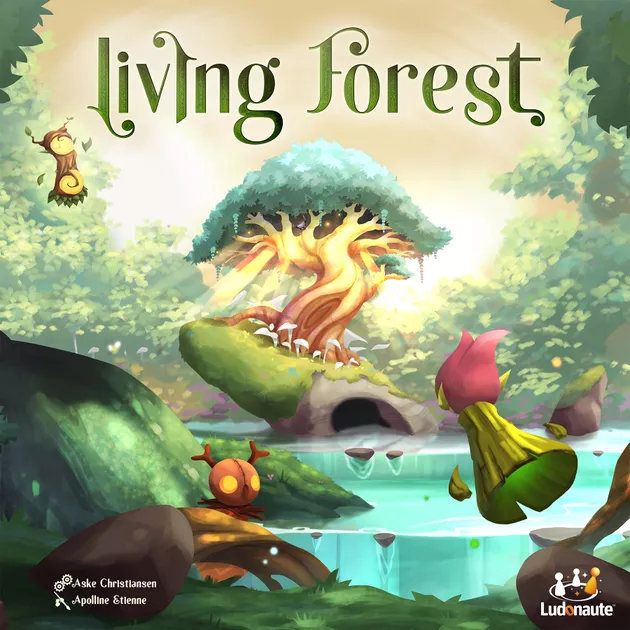

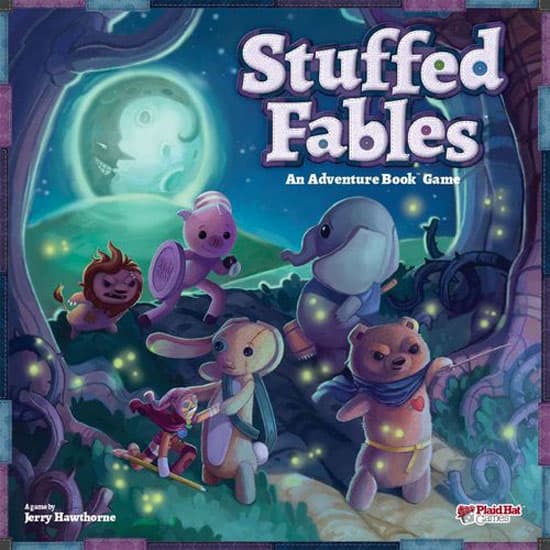


















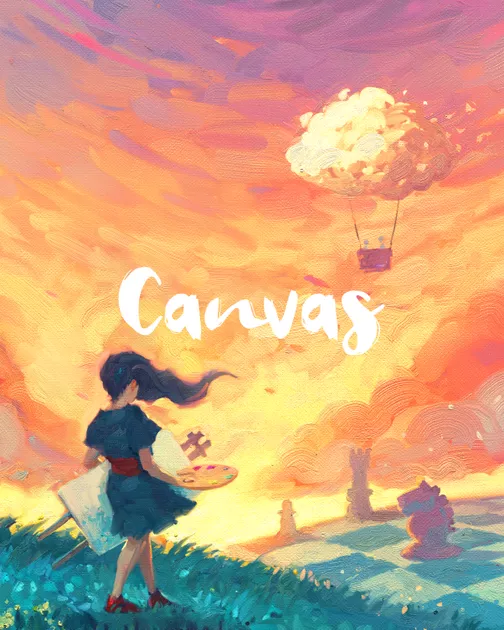










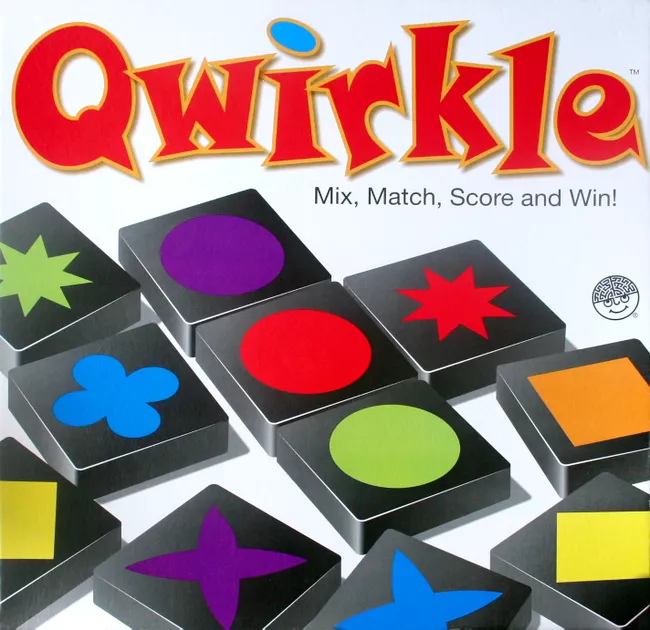


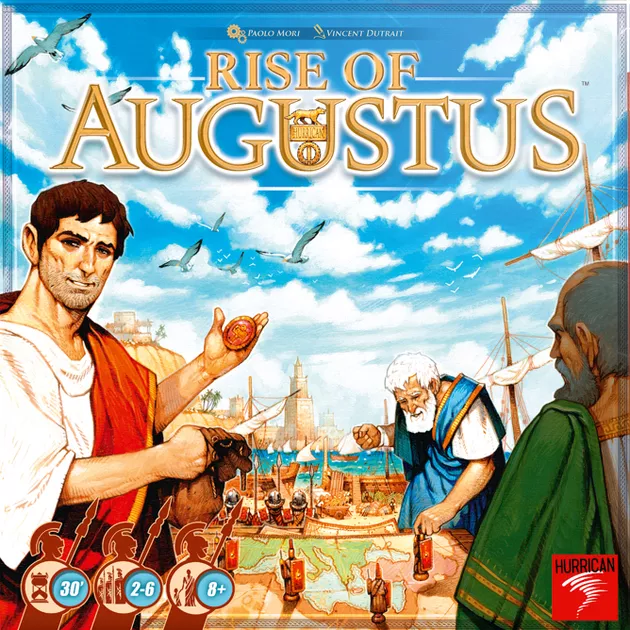







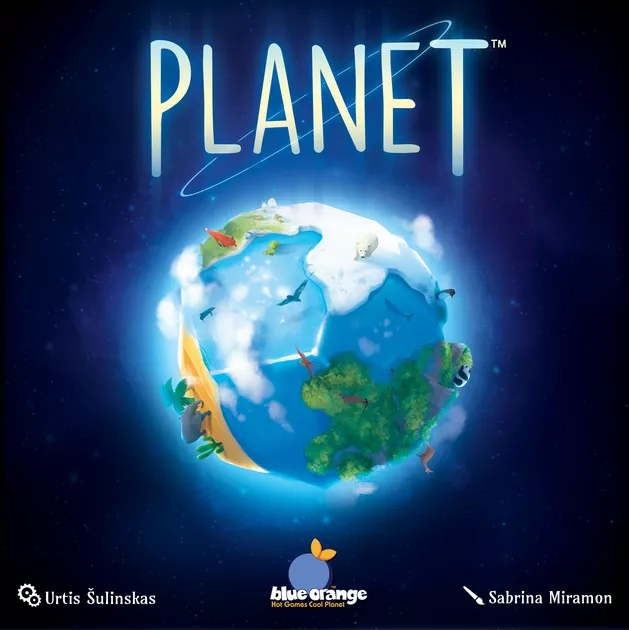

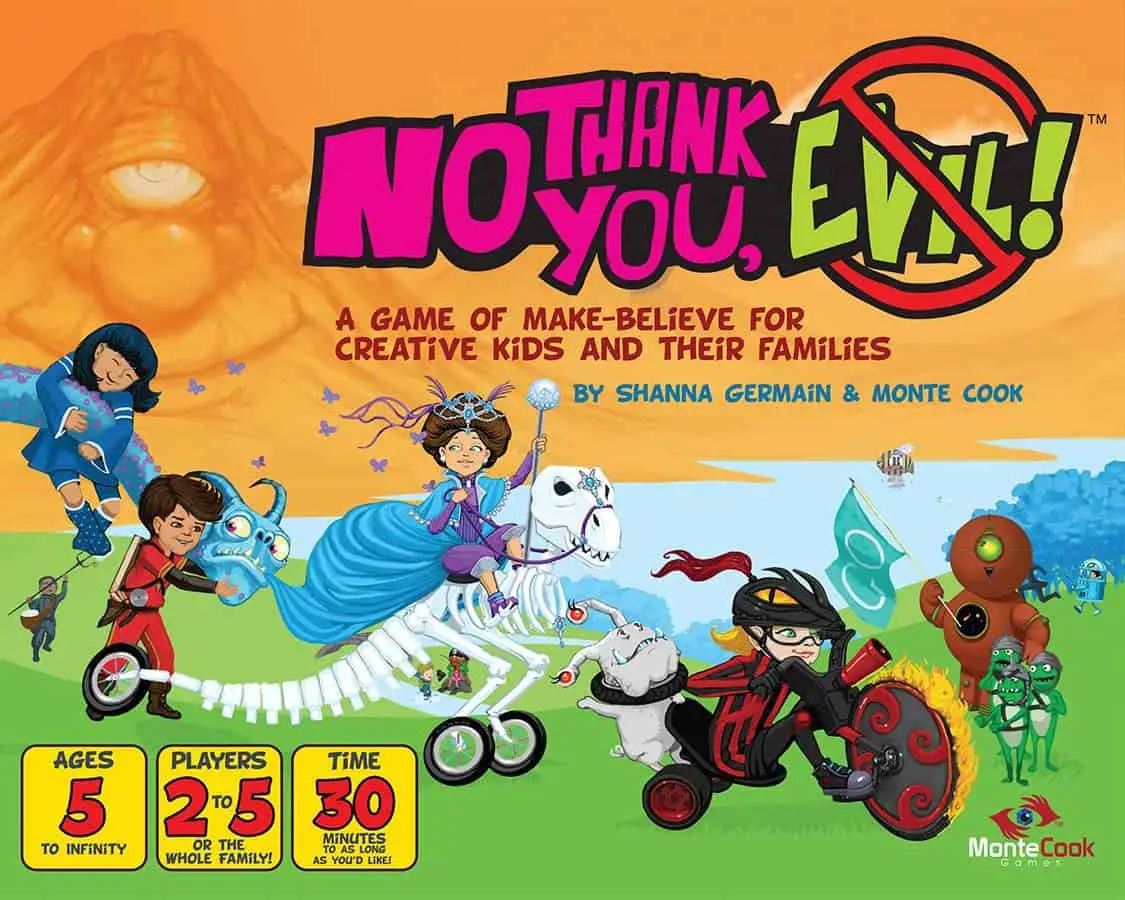





Show Comments